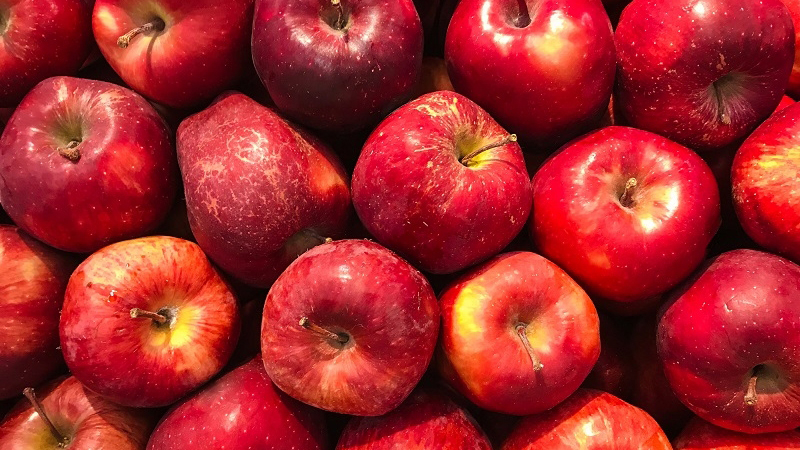2012 Farm Bill May Be A Welcome Surprise
This crop season has offered up a couple of real surprises. One has been absolutely awful, but the other is entirely welcome. Actually, it might be naive to characterize the first one as a surprise, because I am referring to the weather.
A historically early spring opened golf courses in Michigan in early March and encouraged early bloom among flowering plants, including tree fruits. Orchardists across the state and much of the Midwest and Northeast saw their season end before it even got started.
At this point, the series of frost and freeze events following the unusually warm weather reduced most tree fruit crops by half. Some areas escaped, reinforcing the old-fashioned virtue of a “proper orchard site.” For those who were less fortunate and lost most or all of their crops, there is no time to work on their golf swing. They must focus on programs to maintain pest and disease control, minimize bienniality in blanked trees, source fruit for commercial or direct market channels, and hope for better next year.
Neither has the weather been kind to Western tree fruit growers. From south to north, fluctuating temperatures and precipitation, featuring both liquid and solid phases of water, has been a constant battle. The projections of record-breaking apple and cherry crops in Washington have been reduced on a weekly basis, and an early July heat wave augmented that downward trend, with months still remaining before harvest ends. This could well be the shortest national apple crop in years, ending what has been a series of seasons with excellent returns and renewed optimism among producers.
Well, that’s farming. What about the welcome surprise? It has come from an unlikely source, and like the crop season, the final story is not yet known.
Promising Future
As have others interested in federal ag policy issues (and federal policy in general), I have been watching this session of Congress with a little bit of hope and a whole lot of pessimism, kind of like watching brown marmorated stink bug (BMSB) follow the old Oregon Trail to settle the West. Is there any way at all to deal with such calamities?
Well, as it turns out, both Senate and House Ag Committees have surprised many with their bipartisan effort to create the new Farm Bill. While there remain considerable differences on nutrition and commodity crop programs which must be reconciled before we actually have legislation, the two versions not only maintain, but augment provisions dealing with issues vitally important to specialty crop stakeholders.
Again, the documents are not yet law, but the fact that a significant, bipartisan majority, operating under horrific budgetary constraints in the current rancorous political climate, appears to agree federal investments in research and marketing should not only continue, but be strengthened, was a welcome surprise to me.
Then again, maybe it shouldn’t be a surprise. Over the past five years, the Specialty Crop Farm Bill Alliance, commodity and scientific organizations, and research institutions have highlighted the successes of the Farm Bill at the producer and processor level. Congress, and I hope the general public, has increasingly recognized the importance of our fruit, vegetable, and green industries to growers and rural economies across the entire country, as well as contributions to human health and well-being made by diverse specialty crops. It is worth noting the determined and pragmatic leadership by Sens. Stabenow (D-MI) and Roberts (R-KS), and Reps. Lucas (R-OK) and Peterson (D-MN).
The specific programs included in the proposed legislation span a range of areas, including marketing, nutritional assistance, and research; the Specialty Crop Research Initiative (SCRI) is funded at $50 million annually, with that baseline funding extended beyond the current Farm Bill. This is a huge victory and solidifies the SCRI and its systems-oriented, stakeholder-driven approach as a critical, ongoing part of the USDA portfolio. Similarly, funding for the Organic Research and Extension Initiative is included at $16 million per year.
The National Clean Plant Network (NCPN) may merely represent loose change between the cushions of the Farm Bill sofa, but its importance in detecting and controlling virus diseases to the green, grapevine, and tree fruit industries is huge. The NCPN will be funded at $5 million per year, with the possibility of future expansion to permit the inclusion of other specialty crops in its activities.
Legislation also extends the Market Access Program, specialty crop inclusion in school lunch programs, and the Specialty Crop Block Grant Program, each of which, like the research programs above, have demonstrated a significant return on investment.
There are likely more surprises in store for this legislation and the weather throughout the rest of the season. We can’t do much about the weather, or BMSB, except prepare and react, but the next Farm Bill is something everyone can affect. Let your opinions be heard and we might just have another surprise that makes us all happy.
Keep Track Online
A lot more information on the progress and elements of this year’s Farm Bill is available at a couple of helpful websites:
• www.ag.senate.gov/issues/farm-bill
• http://agriculture.house.gov/singlepages.aspx?NewsID=1227&LSBID=1271
Be sure to follow them if you want to stay in the know!










